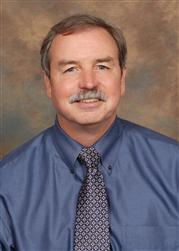Translational Pulmonary Science Center Uses Basic Science to Advance Diagnosis and Treatment of Rare Lung Diseases in Real Time
Understanding the pathogenesis, diagnosis, and treatment of lung disease requires the collaboration between basic and clinical scientists, and is the primary mission of the Translational Pulmonary Science Center (TPSC) at the University of Cincinnati Medical Center. Formed in 2013, the TPSC is a joint effort between the pulmonary divisions of Cincinnati Children’s Hospital Medical Center and UC Medical Center, focusing resources on lung research with the potential to impact human health. “The distinguishing feature of our approach is that we strive to do this in the present, not the future,” says TPSC Director Bruce Trapnell, MD, Professor of Medicine and Pediatrics. In addition to learning about lung biology through the study of rare lung diseases, a primary goal of the TPSC is “directed discovery” – what Trapnell refers to as purposeful examination of a particular therapeutic area in order to advance both the scientific understanding and clinical treatment of the disease. Dr. Francis X. McCormack, the co-Director of the TSPC, adds “In rare diseases, rapid progress is uniquely possible.”
With funding from the National Institutes of Health (NIH), clinicians of the TPSC have conducted numerous trials pertaining to rare lung diseases, including the double blind, randomized, Multicenter International LAM Efficacy of Sirolimus (MILES) trial, which required collaboration with numerous entities to complete.1 Patient partnership proved crucial in this multi-site trial of a rare disease, requiring integral involvement of the advocacy organization, The LAM Foundation, to help the MILES team achieve its goals. A network of LAM patients and clinicians began to form, and additional funding was provided by the Rare Lung Disease Consortium. Recently, Trapnell and McCormack obtained a $3 million grant from the NIH to fund both MILES and other work by the TPSC. In addition, Dr. Jeffrey Whitsett provided a substantial endowmen through the TPSC.
Scientists and clinicians of the TPSC have developed assays for diagnostic and predictive biomarkers, some of which remain the only way to diagnose the disease being studied. These unique studies include:
- Serum vascular endothelial growth factor (VEGF)-D for the diagnosis of lymphangioleiomyomatosis (LAM) 2
- Serum surfactant protein D (SP-D) as a biomarker for lung injury2
- Serum anti-granulocyte-macrophage colony stimulating factor (GM-CSF) antibody for the diagnosis of pulmonary alveolar proteinosis (PAP)2
Currently, the TPSC is developing a first-ever national registry of LAM and PAP, and simultaneously using those populations to validate the accuracy of key diagnostic tests. The TPSC continues to strive to decrease the time between bench discoveries and bedside application.
References: 1. Young, LR, Lee H-S, Inoue Y, Moss J, Singer LG, Strange C, et al. for the MILES Trial Group. Serum VEGF-D concentration as a biomarker of lymphangioleiomyomatosis severity and treatment response: a prospective analysis of the Multicenter International Lymphangioleiomyomatosis Efficacy of Sirolimus (MILES) trial. Lancet Respir Med. 2013 August;1(6):445–452. Reference: 2. Uchida K, Nakata K, Carey B, Chalk C, Suzuki T, Sakagami T, Koch DE, Stevens C, Inoue Y, Yamada Y, Trapnell BC., Standardized serum GM-CSF autoantibody testing for the routine clinical diagnosis of autoimmune pulmonary alveolar proteinosis. Journal of Immunological Methods. 2014 January 15: 402: 57-70.
 Francis X. McCormack, MD
Francis X. McCormack, MD
Director, Division of Pulmonary, Critical Care & Sleep Medicine
Professor of Medicine, Department of Internal Medicine
(513) 558-4831/(513) 475-8523
mccormfx@ucmail.uc.edu
Connect with Francis McCormack, MD on Doximity
 Bruce Trapnell, MD
Bruce Trapnell, MD
Professor of Medicine and Pediatrics
(513) 636-6956
Bruce.Trapnell@cchmc.org

